In this issue
Feature article
The Mistletoebird Trail
-Richard Cassels
Sometimes an ecovillage tucked away in a little inland valley can seem to be its own isolated little world. Suddenly the green clumps in the bare pecan trees at the ecovillage link us to many great stories and to other worlds
This week Mistletoebirds have been particularly active around the floodplain of the Narara Ecovillage, darting in and out of the trees. Their presence is signalled by their vigorous brisk calling, a high-pitched “dzeet, pretty-sweet” or a clear “kitsey- kitsey- kitsey”. So I sat down to wrote a short story about these delightful little birds. I thought I knew everything about mistletoe and these birds, but I was wrong. So forget the “short” bit, this story has connections all over the world and leads back to mediaeval times in Europe.
First, Mistletoe Mythology
Christmas card from First Minister, Scotland, “First Minister’s Christmas card unveiled” by Scottish Government images is licensed under CC BY-NC 2.0
When I was a child, kissing under a bunch of mistletoe was a Christmas tradition. I can’t say I was particularly interested, but it was a matter of pride for my mother to find some mistletoe and hang it up above a door.
Wikipedia reports that this particular tradition “was enthusiastically promoted by the serving classes in the late eighteenth century. The tradition dictated that a man was allowed to kiss any woman standing underneath mistletoe, and that bad luck would befall any woman who refused the kiss”.
A story on the Australian National Botanic Gardens website also describes a rich global history and mythology associated with mistletoe: “Uses for mistletoe, which often involved special recipes and complicated rituals, include
- gaining protection from fires,
- keeping witches away,
- as a divining rod to find hidden treasure,
- keeping horses from straying,
- promoting fertility in domestic herds and crops,
- giving strength to wrestlers…
- avoiding military service,
- protecting from wounds in battle
- forcing evil spirits from hiding and making them tell the truth,
- preventing nightmares,
- providing refuge for woodland spirits in winter, and
- keeping witches from meat in the smokehouse”.
One theory for mistletoe’s association with fertility is that the green clumps of mistletoe stood out as symbols of life in the bare trees of the northern hemisphere (as they do at Narara in winter today!).
Conversely mistletoes are not reported as having any particular significance for Aboriginal people, with the notable exception of the Western Australian “Christmas tree” which is actually a mistletoe. Elsewhere the fruits were reportedly eaten, and used to treat common colds. And as mistletoes are killed by fire, their presence indicated areas that had not recently been burned.
Are Australian Mistletoes the same as the northern hemisphere one?
The name Mistletoe was originally given to northern hemisphere species, but was later extended to similar looking, semi-parasitic plants elsewhere in the world. Australia has over 80 species of “mistletoe”.
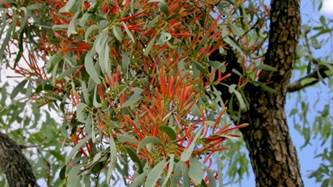
An Australian mistletoe in flower (Image Flickr Tony Rodd Public domain).
Where are the mistletoes at Narara Ecovillage, and why are there so many of them?
The mistletoes at NEV are obvious in the winter in the bare branches of the deciduous Pecan trees at NEV.
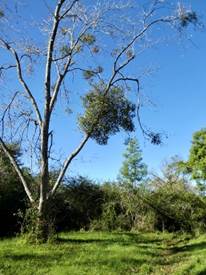
Photo: Mistletoes in the Pecan orchard at Narara Ecovillage, July 2021. Photo Richard C.
Pecans, producers of pecan nuts, are members of the hickory family (remember “hickory dickory dock”?). The Narara Horticultural Research Station (previously the Narara Viticultural Station, among other names, and now the ecovillage) was the site for extensive trials of different types of pecans brought from the USA, starting in 1918 (thanks to Patricia Meagher for this research). NEV inherited a display board of pecan varieties (photo below). Unfortunately the records linking the varieties to the individual trees have not been found.
There are probably other mistletoe plants in the trees around the ecovillage , but they may well be hard to spot for two reasons: first because most of the trees here retain their greenery all year round, but also, intriguingly, because some mistletoe species have evolved leaf forms that closely resemble those of their host.
Are Mistletoes “A Good Thing”?
Mistletoes used to be regarded as “bad “for trees.
Mistletoes are “hemi-parasitic”, because they both feed on their host tree as well as photosynthesising themselves. In unhealthy or ageing trees mistletoes can actually kill the tree. But mistletoes are now understood to play a very valuable ecological role. As well as providing food (nectar and fruit) for a large number of birds, butterfly caterpillars and many other animals, mistletoes provide nesting places and refuges for many bird species.

Little Lorikeet feeding on mistletoe
Mistletoes have been described as “small but powerful biodiversity amplifiers”. They have even been intentionally spread in the city of Melbourne to promote urban biodiversity For how to spread mistletoe see: :https://ecosystemunraveller.com/connectivity/ecology-of-parasitic-plants/mistletoe-restoration/.
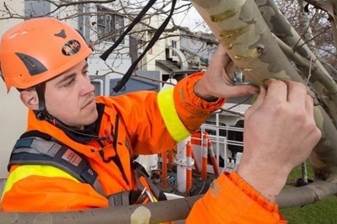
Workers stuck the sticky mistletoe seeds on the underside of tree branches to try to encourage the plant to grow across the city and bring more biodiversity to Melbourne. Source
So what about the birds themselves?
Mistletoebirds are one of only two Australian representatives of a bird family called “Flowerpeckers”. Over 40 species of flowerpeckers are found in in South and East Asia. However the Mistletoebird is found only in mainland Australia: Tasmania has neither mistletoes nor mistletoebirds.
The male bird is a very handsome little fellow. As is common in birds, the female is much duller, mainly grey. But if you are walking outside without binoculars, they probably just look black!
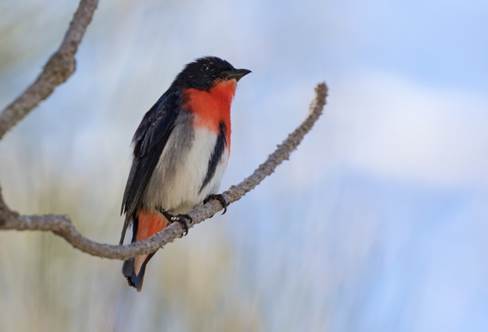
Male Mistletoebird, photo courtesy of Christina Port (Central Coast Birders).
The Mistletoebird specialises in eating and spreading mistletoe seeds, but also eats and disperses other fruits like privet berries. It passes seeds very rapidly through its guts (in between 4 and 20 minutes), thereby facilitating germination. To dislodge the sticky mistletoe seed from its bum and get it to stick to the branch, the bird does a distinctive wiggling dance, parallel to the branch. (I have yet to see this!).

Mistletoebird at Narara Ecovillage, eating privet berries, photo courtesy Chris Bannerman.
Amazingly they have a digestive system that separates fruits from protein (like insects), rapidly ejecting the former and retaining the latter for sustained digestion (Harrison 1978: 225).
What else uses the Narara Mistletoes?
Mistletoes are also host to the caterpillars of various butterflies, including Jezebels.
In light of the cold winter weather, I was surprised to see any butterflies at all at Narara. However Common Jezebel butterflies can be seen in flowering eucalypts. The name presumably refers to the surprisingly gorgeous colouring of the underside of their wings- the name jezebel referring to a wanton woman mentioned in the Old Testament. However when you see these butterflies without binoculars, the main thing you notice is the white patches on their upside of their wings.

Common Jezebel butterfly, showing the underside of their wings. Source
Sometimes an ecovillage tucked away in a little inland valley can seem to be its own isolated little world. Suddenly the green clumps in the bare pecan trees at the ecovillage link us to many great stories and to other worlds.
Thanks to Patricia Meagher for assistance with research and identification.
Further references and reading
- Harrison C.J.O. (Ed) 1978. Bird Families of the World. Elsevier- Phaidon, Oxford.
- https://www.abc.net.au/everyday/the-misunderstood-magical-mistletoes-of-australia/11505510
- https://www.anbg.gov.au/mistletoe/#
- https://www.rbgsyd.nsw.gov.au/Stories/2018/Mistletoe-a-festive-freaky-parasite
……………………………………………………………………………
My Ecovillage Experience
The curious tale of reciprocity, camaraderie and circularity in the building of a tennis wall here at Narara Ecovillage
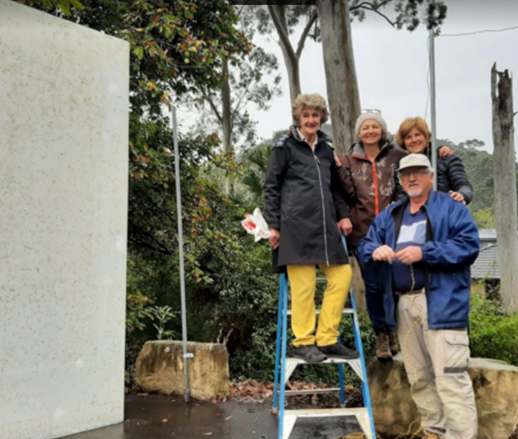
-Lyndall Parris
A couple of us saw the usefulness of a fun, exercise, focal hub in the ecovillage, particularly as a wave of our kids are maturing. We developed a proposal to build a tennis wall on an existing flat bitumen surface, sought lots of input and discussion, then received consent from the relevant community team to go ahead.
We talked to a Nararian builder for a rough quote and timeframe: $500/2 days with volunteer helpers and 90% recycled materials. After 2 days the wall was up. Sean volunteered for half a day and enjoyed it so much he stayed two, Megan was a stayer, Gisella, drawn to the project, turned up to help on the second day and some others came and went.
At the end of the second day, I asked our builder where we were up to with his payment: How can I charge when I have had such a good time, but if you know anyone who could repair the curtains in my van, that would be great. Anne responds: I can do that.
……………………………………………………………………………
The bulk food store (aka ‘the food co-op’)
– Annie McCluskey
Early this year, I started volunteering at the Narara Ecovillage bulk food store for two hours each week. I really enjoy this role, as it allows me to meet more village members and learn about food, while contributing to our community.
Six village volunteers run the store, which opens at least twice a week.
The store was started in 2017 with the aim of providing locally-produced and organic products where possible, and reducing packaging, food miles and prices.
The store started with a limited range of dry items, such as flour, rice, chickpeas, lentils, toilet paper and laundry liquid.
Four years later, our inventory has increased exponentially. We now supply organic chocolate and carob, dried mushrooms & fruit, olive oil, almond/soy/ rice milk, aged balsamic vinegar and various types of pasta.
Many varieties of (mostly organic) flour are available for home bread-makers, including wheat, besan, tapioca, coconut, buckwheat, rye & quinoa. Recently we have even been able to supply fresh vegetables from our community garden, including pumpkins and sweet potatoes.
We are always looking for ways to improve and market bulk food items to the village. For instance, we suggest meals that can be made with ingredients such as polenta (for instance Nigella’s lemon and polenta cake), miso paste (nutritious soups with noodles, seaweed and an egg), and molasses (add it to your muesli or bread). I like to ask people what they plan to cook with an ingredient, and this gives me ideas for my own cooking.
The bulk food store is just one of the unexpected benefits of living in this energetic, generous & connected community.
……………………………………………………………………………
You can also experience the ecovillage! Check out our upcoming major event, Ecovillage Experience Weekend, this October.
……………………………………………………………………………
Life happens … everywhere

-Lyndall Parris
It is the middle of winter and Rob, one of our senior residents, having had a melanoma on his ear a couple of years ago, has been diagnosed with metastatic melanoma.
He has started a new program of immunotherapy, which has some challenging side effects and the outcome for Rob’s health is unknown. He seems to radiate: Que Sera Sera, whatever will be will be.
Rob and his wife, also unwell, need to leave the ecovillage for a place with higher care. The ecovillage is immature for this right now and the community are supporting them here now, and will continue outside the gate, because that’s what love wants to do.
Rob is a community builder extraordinaire. He is a handyman, loves tools, fixing and making things. His deconstruction school holiday activity, that he offers to the village kids, is loved and well attended.
One sunny morning, Rob catches me up on the main road of Narara Ecovillage in his newly acquired mobility scooter. He is heading to the local shops and has found a path off the beaten track.
He slows down, I sit on the road edge barrier and we start to chat. One thing leads to another, and we move to the topic of what’s life about.
I say: it’s a mystery. He says: I love having purpose … even in all this, I have a purpose.
One of the things being involved with Narara Ecovillage does in spades, is provide purpose. This man rocks!
……………………………………………………………………………
Announcement

Express YOUR Interest – Larger Lots for Sale in Stage 2 at Narara Ecovillage!
Apart from lots of our usual size (~ 550sqm), we are selling several larger sized lots of around 1000sqm. This is a hugely interesting and innovative offering, as we tap into creative living arrangement possibilities.
This could be perfect for:
- Families: could you foresee a multi generational living arrangement on one of these lots?
- Friends: could you foresee some friends getting together and designing a great future together?
- Collaborative Individuals: can we help in facilitating neighbourly connections between people of like-mind, so that you too can pursue this option?
Innovative members of the Collaborative Living at Narara group engaged an architect to draw up one possibility for a larger lot, and he has creatively designed an amazing dwelling with 3 x 1 Bedroom units and 5 studio units with a shared kitchen, living, dining room and laundry. Also on the same site is a fully equipped 2 Bedroom apartment permitted under the ’granny flat’ provisions. A worthwhile look and, subject to the Architect’s copyright, these collaborative individuals are very willing to share it with you!
The sky’s the limit with your creativity and ingenuity.
- Please contact us at info@nararaecovillage.com if you would like to explore such possibilities.
If you are not yet a member of Narara Ecovillage Co-operative, but now want to know more about our steps to membership please also us know through info@nararaecovillage.com.
Map below shows the larger lots in pink

……………………………………………………………………………
Events
A Taste of Sociocracy, online. Friday, July 23 7:00 – 9:00 pm
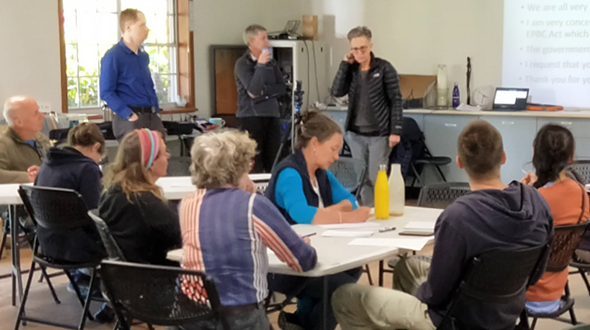
-Rafaele Joudry and Lyndall Parris
How do you get your family, business team or, in our case, 200 people to make decisions, resolve conflicts and feel that they have been heard?
Narara Ecovillage is using Sociocracy. This is a decision-making and governance system that:
- Is inclusive, transparent and equitable, including all voices
- Promotes a better use of resources, and coordination of activities
- Leads to care, respect and cooperation
- Ensures results of decisions are reviewed to determine their ongoing usefulness
This system has relevance for communities, businesses, non-profits, families and more.
Come and have a ‘taste’ of this methodology in a presentation by ecovillage founder Lyndall Parris, supported by her buddy Rafaele Joudry
- WHEN: Friday 23 July, 7:00 – 9:00 pm
- COST: FREE
- RSVP: Lyndall@nararaecovillage.com
- WHERE:
- Narara Ecovillage Zoom: https://us02web.zoom.us/j/6048362412?pwd=dXM4KzVuSjh2U1lRck0rQVNpVDBuZz09
- Meeting ID: 604 836 2412
- Passcode: 2250
Narara Ecovillage is going from strength to strength, year by year – and it is wonderful to witness their journey. They are definitely at the forefront of Sociocracy in practice in Australia. –Gina Price, Australia’s leading Sociocracy Consultant
……………………………………………………………………………
Chat, Coffee, Connect: turn your Ecovillage dream into reality – online! Sun July 25 10.30am- midday
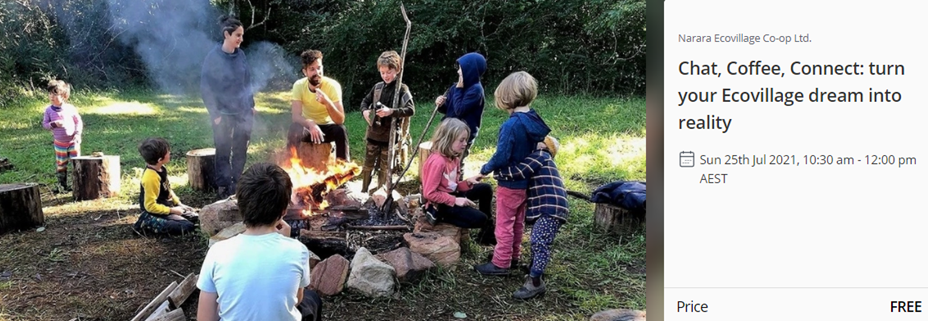
Join us for a FREE 75-minute online forum to ask Narara Ecovillagers all those curly or curious questions you have.
Brew up a Sunday morning coffee or tea and quiz our Ecovillage members on the topics you’ve always wanted to ask about but didn’t know where.
Our monthly Open Day is sadly cancelled in July due to lockdown so find out what you want instead without leaving the comfort of your home.
Start by meeting Village Founder Lyndall Parris for a 10 minute update on the latest milestones in our social and building developments.
Then choose to join the conversation you most want to get the skinny on…
- Family living at Narara:what’s it like to raise children there, school options, support and more
- Legal and Finance issues:Get the facts on the ins and outs of financing a building and where to find answers to your legal questions. What does it cost to live in the community and what do I get for this?
- Sustainable Building:Technical and material queries and design experience in our diverse buildings to date. What do you want to know, and how can we make it possible?
- Culture and Community:Ask how we make these words a reality to support our residents and bring us together.
- Collaborative Living:Meet and quiz our collaborative housing pioneers. What does it look like, ownership, financial and legal questions and who could I share this idea with?
- Food productionin the Village: Ask our veggie growing, permaculture, chicken-raising expert amateurs what’s on offer and how to get involved.
This online session is all about YOU and anything you need to know to help you turn dreams of Ecovillage living a step closer to reality.
There remain only a few lots unaccounted-for in our Stage 2 development so the window is closing to own and move to this Ecovillage community.
The Booking link to register is here
……………………………………………………………………………
Picnic Fun Date for your Diary: Sun, August 8 … we can but hope!
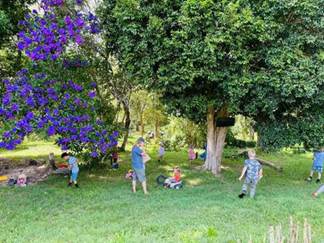
We would love you, your family and friends to visit Narara Ecovillage for a shared Picnic Under the Oak Trees
Dust down your ole picnic rug and bring all you need for a picnic. Meet some Nararians, learn more about the ecovillage and enjoy some time on this magnificent property.
- Hope you can join in. Sunday 8 Aug from 12 – 3pm
- RSVP: Lyndall@nararaecovillage.com
……………………………………………………………………………
Ecovillage Experience Weekend October 8-10, 2021
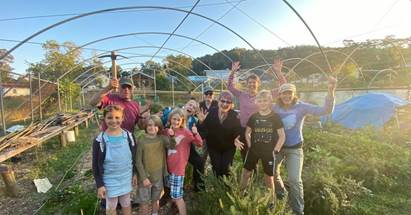
We are really excited to be able to offer visitors a taste of community living at Narara Ecovillage this October. It will be a unique immersive experience for our guests, and promises to be heaps of fun for everyone involved.
Meet some of the highly skilled members of the village, as they guide you in a range of activities, including birding, mushroom growing, yoga, bush regeneration, story telling & much more.
Kids are also welcome, and there are workshops just for them.
- Check out the full program here
- Check our COVID CONTINGENCY PLANS and flexible cancellation policy. You can benefit from Early Bird pricing and minimize your risk.
……………………………………………………………………………
Do a Thing a Day
Please sign this important petition: Defend our kids’ right to climate safety
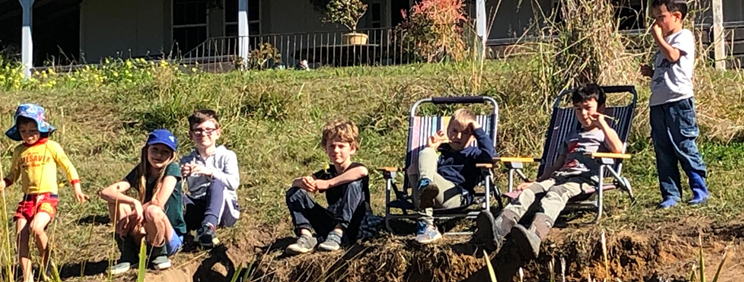
Does the Environment Minister have a duty of care to protect our kids from climate harm? Recently the Federal Court said yes. It’s now law!
But Environment Minister Sussan Ley is planning to appeal the ruling! This duty of care – to keep our children safe – is under threat.
Will you stand up for our kids’ right to be protected from climate harm by signing our petition to the Environment Minister, Sussan Ley?
- Please add your name here: ap4ca.org
……………………………………………………………………………
Please write a letter THIS week to your local member: Implement laws to actually protect nature
– Richard Cassels, John Shiel, John Seed and Megan Wallace
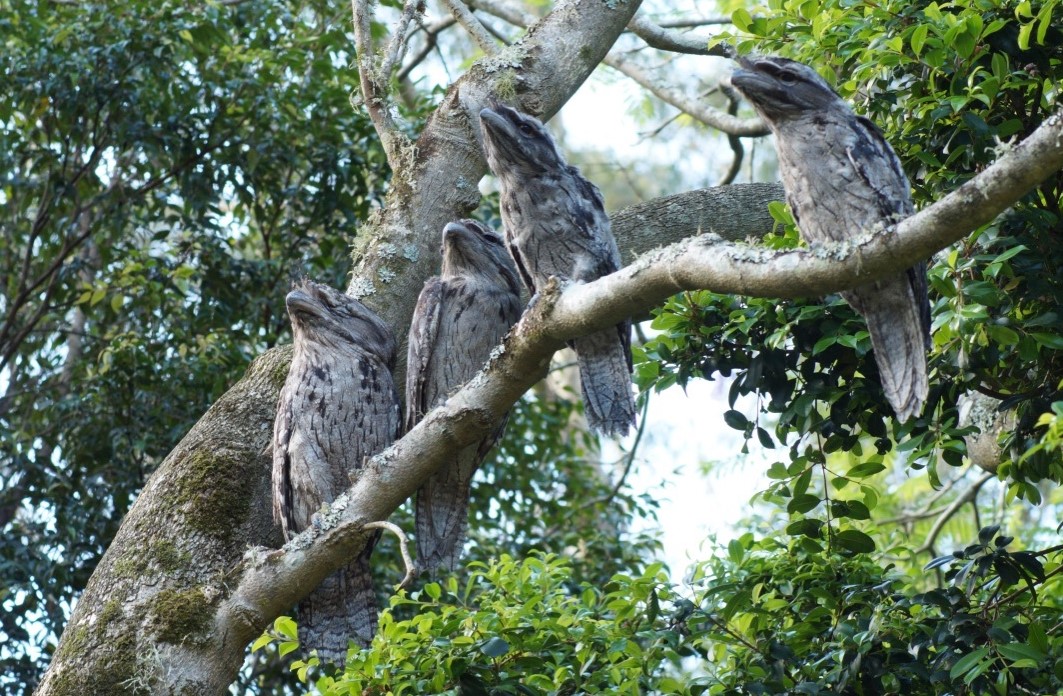
Tawny frogmouths, 2016
Background
Australia’s Environmental Protection and Biodiversity laws have been undergoing a 10-yearly independent review by Prof Graeme Samuel.
Samuel consulted business, developers, farmers, scientists and conservation groups and came up with some firm recommendations. He concluded that the legislation was not working.
The Coalition government has not honoured his recommendations, but instead watered them down significantly, proposing to delegate many of its responsibilities to the States, and failing to come up with strong environmental standards and independent monitoring mechanisms.
Several cross benchers in the Senate managed to get this legislation delayed, but it is being resubmitted.
Narara Ecovillage members visit Lucy Wicks
A group of 3 members from the Narara Ecovillage went to see Mrs. Lucy Wicks, Federal Member for Robertson, on 9 June. She and her staff kindly gave us time to hear our concerns- 30 minutes with her advisers and then 30 when she joined us. We appreciated this courtesy.
It is however our opinion that the Coalition is not taking environmental concerns seriously and that its new environmental legislation is inadequate: the proposed national standards are not strong enough, the Environmental Assurance Commissioner’s powers should be increased, and Parliament should be able to review all proposed standards.
Action requested- Please act THIS WEEK
It is time to write (a hand written letter is best) to your local Coalition MP or Senator and say that that you want a better future for our birds and stronger environmental protections, not weaker ones.
- The bills will not deliver the environmental protections our nation needs to halt the extinction crisis.
- To do that we need strong, legally binding, outcomes focussed national environmental standards and a truly independent regulator to oversee decision making.
- Although the Environment Minister has announced plans to develop new standards within two years of the legislation passing, this is not good enough, as there is no guarantee stronger standards will be negotiated.
- We need legislation now that will implement the recommendations of the Samuel Review and actually protect nature.
You do not have to be an expert on the legislation. The MPs office will probably tell you that the Coalition is doing great things. They have done a few things, but in our opinion it’s not enough. We plan to make this an election issue.
Find your federal, state and local representatives
……………………………………………………………………………
My Efficient Electric Home (facebook group)

Photo: screenshots from two recent posts
Check out the incredible Facebook Group “My Efficient Electric Home” It has 32,000 members and anyone can join.
The group has reviews of almost every retrofit and appliance product (just search the archives).
Formed in June 2015, this Group is a leading DATABASE OF INFORMATION about improving the comfort and energy performance of Australian homes. We openly discuss methods & especially share data re space heating, water heating, and cooking in homes using devices powered / fuelled only by renewable heat and electricity, rather than by fossil gas, LPG, or wood. Data / info regarding home economics, comfort, health, convenience, aesthetics, and feng shui are all welcomed!
This database is easily searchable. Members are encouraged to use “Search this Group” to dig up old posts relevant to their issue / interest.
……………………………………………………………………………
ATA Building in bushfire resilience
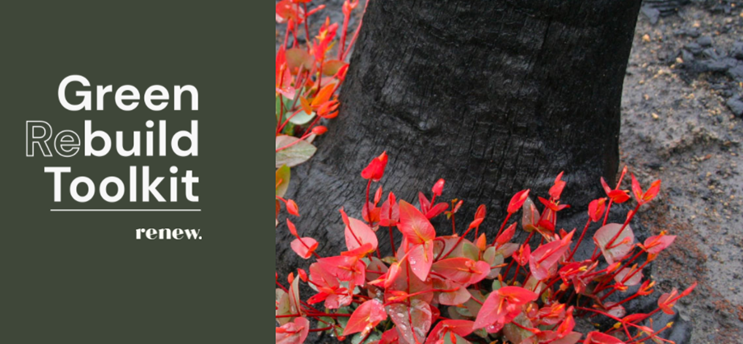
Check out Renew’s Green rebuild toolkit
The 2019-2020 Australian bushfires destroyed 5,900 buildings and homes. 2.9 million people had their homes damaged, threatened, or were temporarily displaced.
The Green Rebuild Toolkit is a set of resources to help those people rebuild their homes and increase resistance to future climate disasters.
The Green Rebuild Toolkit is a project from Renew. We’ve been providing expert, independent advice on sustainable solutions for the home to households, government and industry since 1980.

Screenshot from the toolkit
……………………………………………………………………………
Recommendation: an unparalleled summary of our planet’s crisis

-Richard Cassels
Here’s a book you must read, a film you must see:
‘I am 94. I’ve had an extraordinary life. It’s only now that I appreciate how extraordinary.
As a young man, I felt I was out there in the wild, experiencing the untouched natural world – but it was an illusion. The tragedy of our time has been happening all around us, barely noticeable from day to day – the loss of our planet’s wild places, its biodiversity.
I have been witness to this decline. A Life on Our Planet is my witness statement, and my vision for the future. It is the story of how we came to make this, our greatest mistake – and how, if we act now, we can yet put it right.
We have one final chance to create the perfect home for ourselves and restore the wonderful world we inherited. All we need is the will to do so.’
-David Attenborough
Contact the Network News
Liz Bassett Editor network.news@neln.org.au
About the Network and the Village

The Network
The Narara Eco Living Network is a not-for-profit educational and outreach body established by members of Narara Ecovillage to foster more sustainable living in all its forms and promote the vision of the village.
We publish the Network News and run networking & educational events and community projects.
Become a supporter of the Network – 12 months membership is only $20 an individual or $40 a family. Networkers are offered discounts to a variety of events at the village, and free entrance to Open Days. Click here to check out upcoming events. The network is 100% run by volunteers so we really appreciate your support!

The Ecovillage
Narara Ecovillage is a community that blends the principles of ecological & social sustainability, good health, business, and caring. We are located on the NSW Central Coast at 33 Gugandi Road, Narara 2250. Click here for more info about Narara Ecovillage

